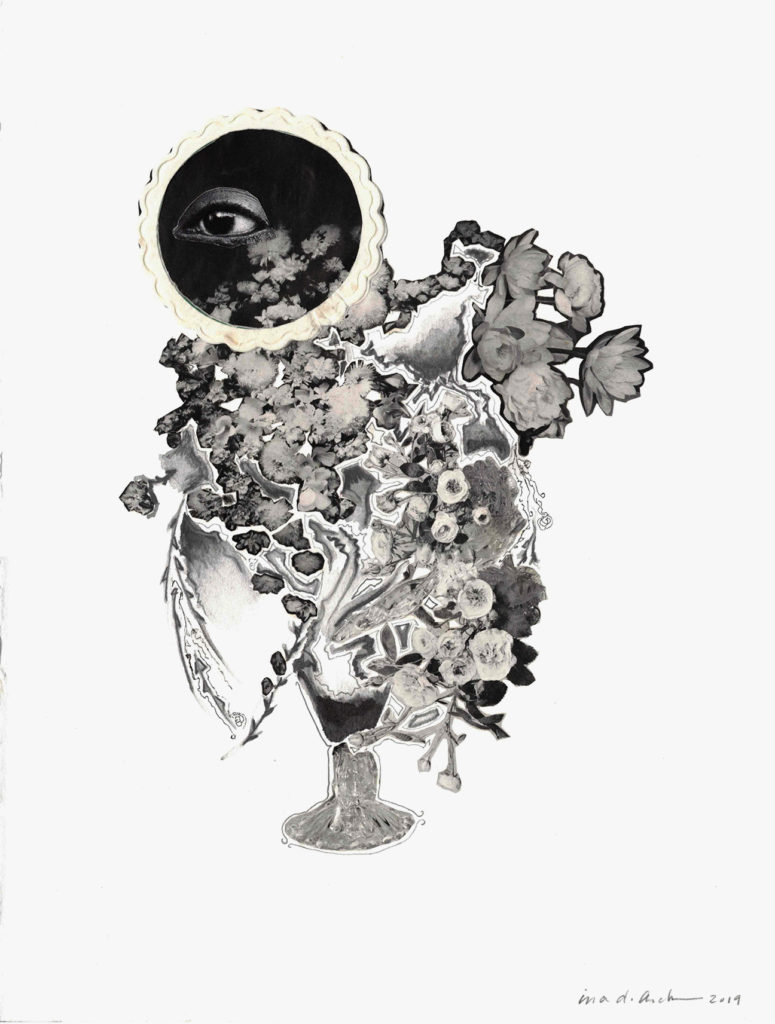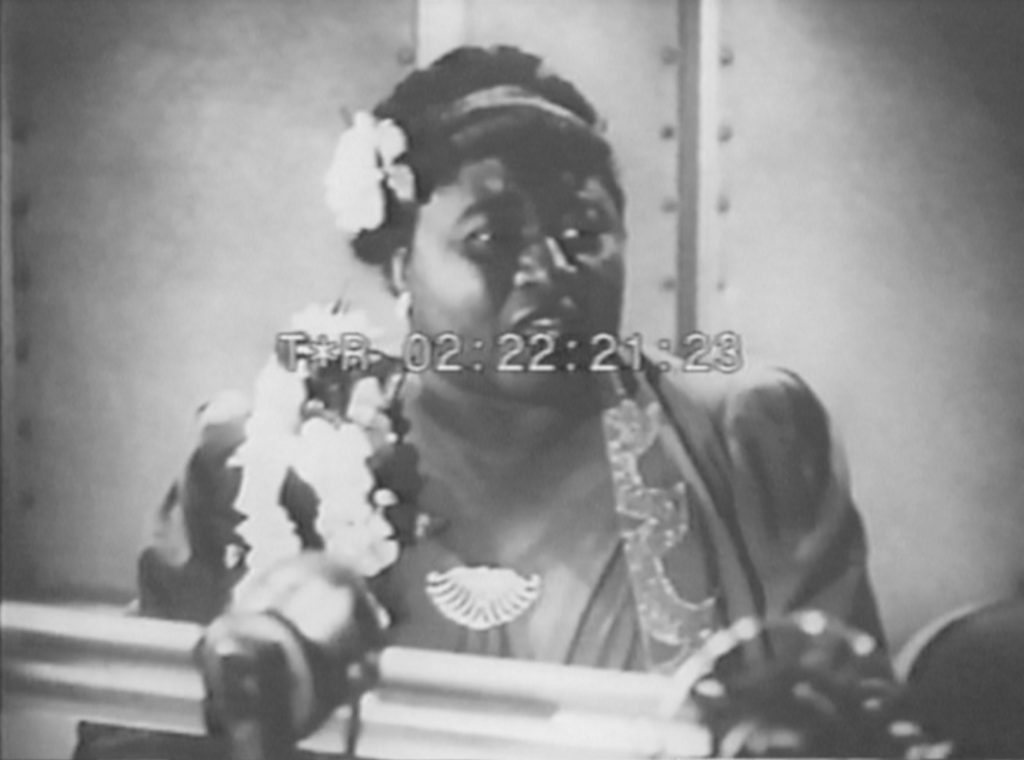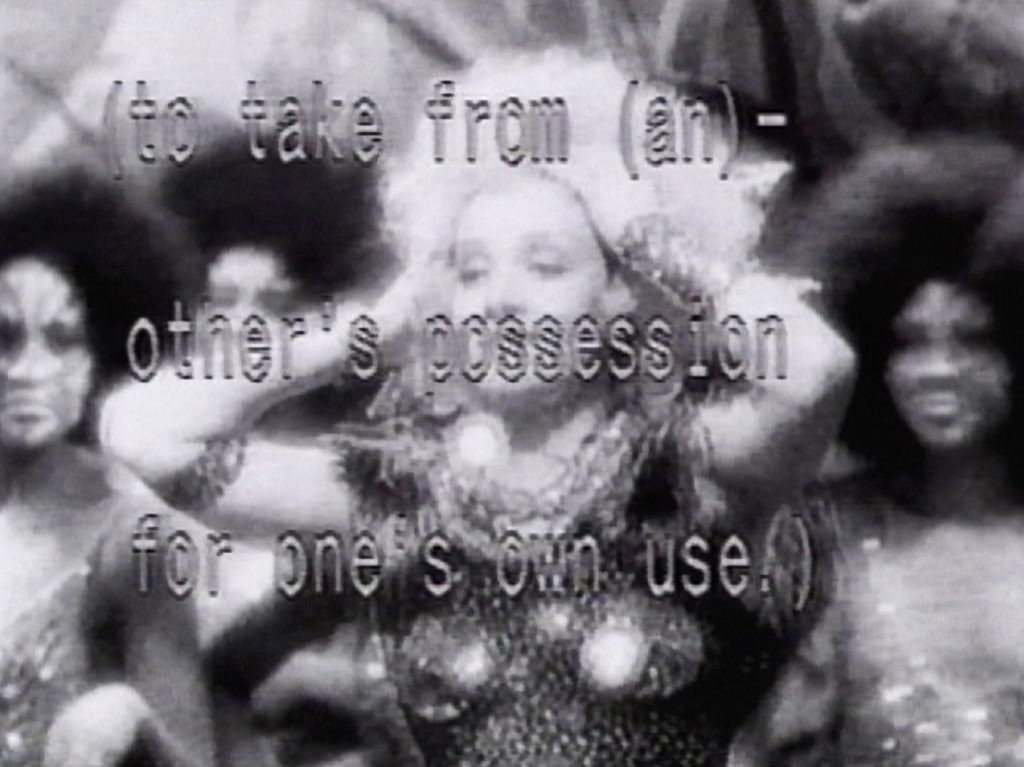Ina Archer
Osmundine (Orchid Slap)
August 21 – October 11, 2020 (extended)
Open by appointment only
To schedule a visit, click here or contact the gallery at inquiries@microscopegallery.com
Installation Views
Press:
Artforum
Hyperallergic
Hyperallergic
Microscope is very pleased to present Osmundine (Orchid Slap), the first solo exhibition at the gallery of works by Ina Archer. It also marks the re-opening of the gallery’s physical space since the shut down in March, with visits by appointment only until further notice.
The title of the exhibition is borrowed from a new multi-media installation by Archer and refers to both the potting material made from roots of ferns of the Osmunda genus used to grow orchids and a historic scene in the 1967 multi-Oscar-winning film “In the Heat of the Night.” In that scene, which takes place in an orchid greenhouse, Mr. Tibbs, a police detective played by Sidney Poitier, returns a slap from a plantation owner: the first time that a black man strikes a white man in an American movie. Archer “mashes up and prolongs” the moment through repetition in a video projection onto a small area of a screen-like collage, the largest of three predominantly black & white works on paper featuring orchids and other flowers that form the installation.
In this and the other works on view — including the multi-channel video installation “Hattie McDaniel: or A Credit to the Motion Picture Industry” (2003); the single-channel video “1/16th of 100%!?” (1993-96); and a just completed series of mixed-media collages — Archer holds up a mirror to the inaccurate and degrading representation of African Americans and “the other” in Hollywood and commercial film, musicals, literature, art and product branding over the past 120 years. Through the use of evidential source materials she has meticulously collected from movie and television footage, vintage books, and wrappers from present-day candy, among others, Archer “re-makes, re-edits and re-contextualizes” images of blackness to address themes of race and race relations including the legacy of minstrelsy, labor and ownership, and cultural appropriation. Her works typically contain elements of humor, including at times through the insertion of herself in the guise of various subversive fictional characters.
“Hattie McDaniel: or A Credit to the Motion Picture Industry“ is a multi-channel installation based around archival footage of Hattie McDaniel — the first African American to receive an Oscar — making her acceptance speech in 1940 for her “Best Supporting Actress” performance of “Mammy” in “Gone With the Wind,” which plays in sync on several adjacent monitors. A handkerchief and portrait of McDaniel in a maid costume, a role she played 74 times during her career, sits on a stand nearby. A video looping on a smaller central monitor mixes shots of maids from Hollywood musicals and comedy films with McDaniel’s and Ethel Water’s hands as they “work” in their various film roles, intercut with the “frantic” Oscar acceptance speech of Halle Berry decades later in 2002. Archer makes a brief appearance as a mischievous devil following a time continuity error on the “documentary” footage of McDaniel’s speech indicating that the awards ceremony, which was not broadcast live at that time, may have been staged: Might the role of “Academy Award Winner” have been the actor’s greatest performance?

In the 23-minute single-channel video “1/16th of 100%!?” (1993-96), the title of which references the definition of a “colored person” based on the percentage of black ancestry according to a 1910 amendment to the constitution of the State of Virginia, Archer draws attention to the changing definition of race and the way power and the law are connected: who do laws and contracts apply to or benefit? The work opens with various definitions of appropriation: “to take from (an)other’s possession for one’s own use,” followed by that of miscegenation: “marriage or cohabitation between whites and a member of (an)other race,” which was illegal in some U.S. states until 1967. Most of the video consists of Archer’s re-appropriated scenes from numerous movies — among others The Jazz Singer (1927), Showboat (1951) and Imitation of Life (1959) — that specifically concern race relations, the ramifications and remnants of the historical forms of minstrel shows in the film industry, and other forms of cultural appropriation.
In her paper collages Archer combines images of African American writers, actors, and characters including minstrels and “Golli” dolls from sources she has collected over the years — such as vintage books, illustrations, calendars, sugar and Italian coffee packages, beer labels, drink coasters, and Liberty and Life magazines — with materials such as mylar and color swatches. Additionally, the artist often uses drawings in ink and graphite to extend certain patterns or add new elements to the collaged compositions.
The background support for all but one of the collages is from a vintage copy of the 1901 novel “Mrs. Wiggs Of The Cabbage Patch,” which the artist acquired because of the “Uncle Tom” character it features. Illustrations and text on the pages are often left visible. “Don’t you worry so, Jimmy” reads one of Archer’s two works in the exhibition dedicated to James Baldwin, in red beneath a cutout image of Baldwin’s face encircled by tiny red roses. In a larger collage, “Jimmy (The Devil Finds Work),” a reference to the Baldwin’s 1976 book-length essay on his experience of watching film, a cut-out of one eye of the author sits atop of a bouquet of paper, graphite and ink orchids.
“Ina Archer: Osmundine (Orchid Slap)” opens Friday August 21st and continues through October 11th, 2020 (extended). On the opening day August 21st, visit hours are 1 to 9pm. To schedule a visit or for any other inquires contact the gallery at inquiries@microscopegallery.com or by phone at 347.925.1433.
To ensure self-distancing and disinfecting protocols, visits will be scheduled to begin on the hour for individuals or groups of up to 4 people. Gallery Hours: Thursday through Monday, 1-6pm. Extended Hours: Friday August 21, 1-9pm. Appointments outside of these hours will also be considered.
_
Ina Archer is a visual artist and filmmaker whose work examines the intersections of race/ethnicity, representation, and technology. Her multimedia installations and single-channel works have been shown nationally including at Studio Museum in Harlem, New York, NY; White Columns, NY; Maysles Cinema, New York, NY; Harvestworks, NY; Microscope Gallery, Brooklyn, NY; The List Visual Arts Center at MIT, Cambridge, MA; Contemporary Art Museum, Houston, Texas; Portland Museum of Contemporary Art, Portland, Oregon; and Spelman College Museum of Fine Art, Atlanta, Georgia, among others. Archer was a Studio Artist in the Whitney Independent Study program, a NYFA multidisciplinary Fellow, a Creative Capital grantee in film and video, and she has been awarded numerous residencies. She is a Media Conservator at the Smithsonian National Museum of African American History & Culture. Archer received a BA in Film/Video from Rhode Island School of Design and an MA in Cinema Studies from NYU. She was born in Paris, France and currently lives and works between Washington DC and Brooklyn, NY.

